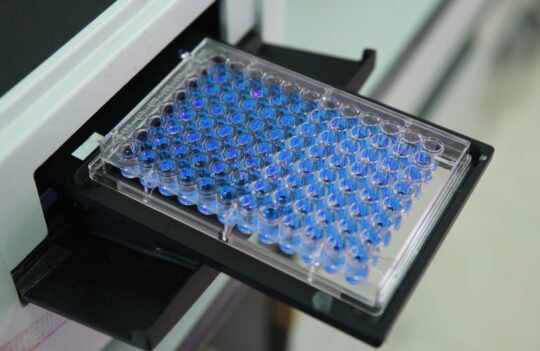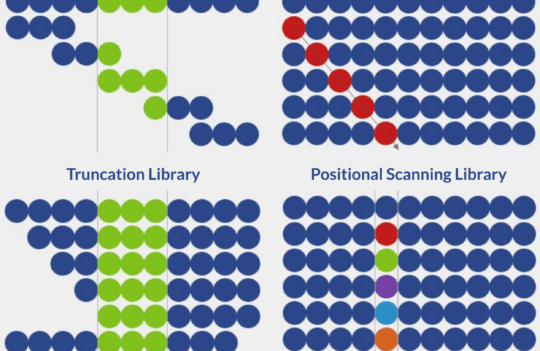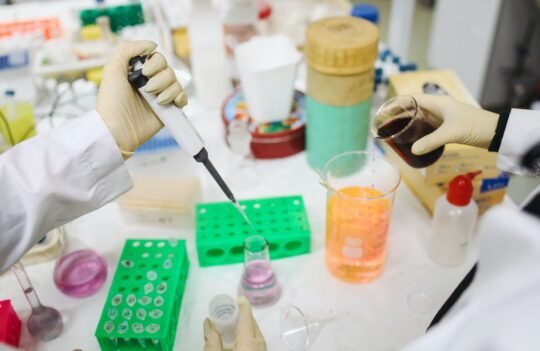 Peptide synthesis
Peptide synthesis
What are multiple antigenic peptides (MAPs)?
Peptides are small flexible molecules, easy to synthesize, modify, or arrange in different configurations. Drawing from the natural complexity and three-dimensional structure of native cognate proteins, researchers created the first synthetic peptide dendrimers in the late 70s. Today, these multiple antigenic peptides (MAPs) serve a variety of applications including vaccines, diagnostics, and smart delivery systems.
Structure and composition of multiple antigenic peptides
Multiple antigenic peptides (MAPs) are highly branched, dendrimer, and antigenic structures consisting of linear peptide chains attached to a single core. Although any amino acid residue could serve as the core, studies found that lysine (Lys) residues remain the most flexible and useful for a variety of applications.
Arginine (Arg) rich dendrimers can replace Lys when developing multiple antigenic peptides for intracellular delivery applications. Likewise, polyglutamic and polyproline cores have been reported as promising vectors for smart drug delivery systems. These systems comprise a far safer alternative to viral vectors.
The advantage of the dendrimer MAP structures is their high antigenicity and immunogenicity, enough to fulfil the role typically reserved to carrier proteins as strong triggers of the immune response.
Production of multiple antigenic peptides
Multiple antigenic peptides can be prepared by solid-phase peptide synthesis via two major strategies: convergent or divergent synthesis. As the implies, in the divergent strategy, MAPs are produced in a stepwise manner starting from the core towards the branches. In contrast, convergent synthesis requires the production of the branches (or dendrons) separately and subsequent assembly into a complete dendrimer.
Each strategy has its advantages and limitations. For instance, divergent synthesis can become cumbersome when working with large molecules. For this reason, this strategy is preferred for the synthesis of smaller and homogeneous multiple antigenic peptides, such as those used for drug and gene delivery. In contrast, the production of heavily branched and varied peptides is only feasible when convergent synthesis is applied.
Although the process of producing and purifying each dendron separately makes the synthesis more complex, it also ensures the high quality and accuracy of the final product. This process also facilitates the synthesis of multiple antigenic peptides with different types of branches.
Overview of the major applications of multiple antigenic peptides
The major applications of multiple antigenic peptides include:
- Drug and gene delivery
- Antiviral agents
- Vaccines – MAPs can serve as protein mimetics for vaccines against infectious diseases (bacterial, viral, and even parasitic), where a multi-antigen response significantly enhances pathogen’s clearance
- Biosensor or diagnostic reagents – MAPs are superior in terms of specificity and safety in comparison to non-branched peptides or inactive viruses, respectively, making them suitable to detect low specificity antibodies, as is the case of those produced during the primary immune response
Multiple antigen peptide vaccine systems
Multiple antigenic peptides can carry different antigens tied to a single core. This property significantly increases their immunogenicity, allowing them to elicit a strong immune response even in the absence of carrier proteins.
There are currently two major strategies for the production of MAP-based vaccines:
- Addition of functional components – T-cell epitopes, cell-penetrating peptides, and lipophilic molecules are some of the examples of functional components that may either improve the deliverability of the antigen or enhance the T-cell-dependent B cell activation, resulting in a long-lasting and highly specific humoral response
- Addition of antigen-displaying components – self-assembling peptides, gold nanoparticles, or other non-peptidic dendrons, are known to contribute to better exposure of the antigens and subsequently lead to more rapid recognition of these molecules as foreign by the immune system
Although both strategies are equally useful to increase the immunogenicity of peptide vaccines, the second may require several synthetic steps. These additional steps increase production time and cost, especially when gold nanoparticles are used. The introduction of cost-effective nanomaterials would considerably increase the feasibility of developing antigen-displaying components for peptide vaccines and scale up their production process.
Multiple antigenic peptides as highly specific diagnostic reagents
Although easy to synthesize, linear peptides often suffer from poor coating efficiency and limited reactivity, making it challenging to integrate them in diagnostics applications. In contrast, the multimeric nature of MAPs eases their immobilization on surfaces, a highly coveted property in assays such as ELISA. Moreover, immobilizing MAPs is less likely to modify their complex three-dimensional structure, making it easier to preserve their specificity and reactivity.
Studies consistently show that MAPs designed to detect pathogens such as HIV in serodiagnostic tests are significantly more sensitive to the presence of anti-viral antibodies than linear peptides. This heightened sensitivity allows the detection of pathogens using a significantly lower quantity of reactants in any given test. The use of multiple antigenic peptides is also reported to allow rapid differential diagnosis, particularly when a mixture of different MAPs is used.
Concluding remarks
Multiple antigenic peptides are dendrimer structures built to increase the reactivity, sensitivity, and specificity of linear peptides obtained by solid-phase synthesis. These structures can be produced either by divergent or convergent synthesis and they serve multiple applications including vaccine production, drug or gene delivery, and diagnostics, among others.
- Fujita, Y. And Taguchi, H. Current status of multiple antigen-presenting peptide vaccine systems: Application of organic and inorganic nanoparticles. Chem Cent J. 2011; 5(1):48. doi: 10.1186/1752-153X-5-48
- Joshi, V. G. et al. Multiple antigenic peptide (MAP): a synthetic peptide dendrimer for diagnostic, antiviral and vaccine strategies for emerging and re-emerging viral diseases. Indian J Virol. 2013; 24(3): 312–320. doi: 10.1007/s13337-013-0162-z
- Niederhafner, P. et al. Peptide dendrimers. J Pept Sci. 2005; 11(12):757-788. doi: 10.1002/psc.721




